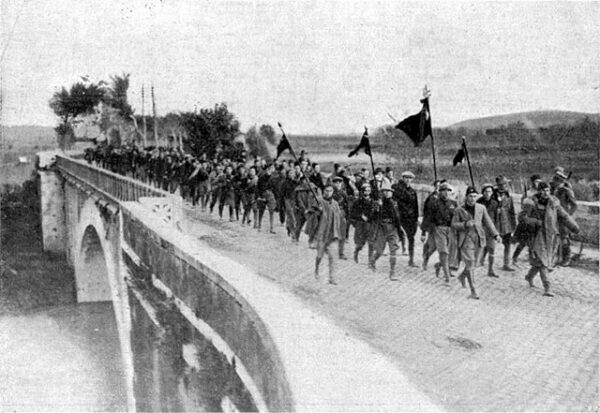On October 28, 1922, a pivotal moment in European history occurred when the Italian Fascists, led by Benito Mussolini, marched on Rome and effectively took control of the Italian government. Known as the “March on Rome,” this event marked the rise of Fascism in Italy and laid the foundation for Mussolini’s authoritarian regime, which would dominate the country for the next two decades and have significant global consequences.
In the early 1920s, Italy was in turmoil, struggling with the aftermath of World War I. Despite being on the side of the Allies, Italy had little to show for its sacrifices. Economic hardships, widespread social unrest, strikes, and dissatisfaction with the liberal government made the country ripe for radical movements. One of these movements was Fascism, founded by Mussolini in 1919. Promising national glory, economic stability, and strong leadership, the Fascists attracted a growing following.
Mussolini, a former socialist who had shifted to nationalism and militarism, built a coalition of war veterans, disillusioned workers, and nationalists. The Fascists, notorious for their black shirts and violent tactics, used paramilitary force and propaganda to gain influence. Their goal was to restore Italy’s “lost greatness” through a totalitarian regime.
By 1922, Prime Minister Luigi Facta’s liberal government was crumbling under pressure from strikes, protests, and the growing Fascist threat. Sensing an opportunity, Mussolini organized the March on Rome to demand control of the government.
On October 27, 1922, thousands of Fascists mobilized across Italy, converging on Rome. Although the march was somewhat disorganized, the sheer number of participants and the threat of violence created a crisis. Mussolini, remaining in Milan during the early stages, waited to see how events would unfold. Around 30,000 black-shirted Fascists moved toward the capital, raising the stakes. Prime Minister Facta urged King Victor Emmanuel III to declare martial law, but the king, fearing civil war, refused.
Seeing the government’s indecision, Mussolini traveled to Rome on October 28. There, he was invited by the king to form a new government. This decision sealed the fate of Italy’s liberal democracy, as the government resigned and Mussolini, at age 39, became Italy’s youngest prime minister.
The March on Rome was not a full-scale revolution, but it was a successful power grab that signaled the collapse of Italy’s democratic institutions. Mussolini’s rise was largely due to the weakness of the government and the king’s reluctance to act. Once in power, Mussolini quickly moved to consolidate his control. Over the next few years, he dismantled Italy’s democratic framework, turning the country into a one-party Fascist state. Political opposition was crushed, censorship was enforced, and civil liberties were curtailed. By 1925, Mussolini had assumed dictatorial powers, ruling as “Il Duce” (The Leader). His regime promoted aggressive nationalism and expansionism, aligning Italy with Nazi Germany in the 1930s.
The March on Rome marked the beginning of a dark chapter in Italian history. Mussolini’s Fascist regime would lead the country into World War II, leaving a legacy of authoritarianism and ruin.






